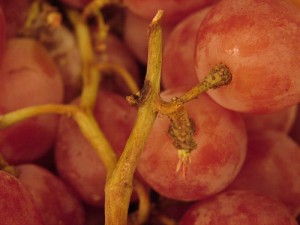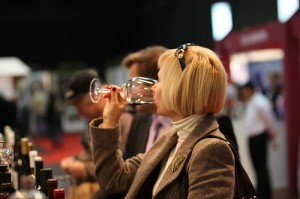There’s no way one single person (even if that person is The Academic Wino!) can possibly review every single piece of peer reviewed literature related to wine that is published every day. This series presents multiple new papers (within the past year or so) in one post by briefly summarizing the research and linking to the source in order for you to pursue further if you’re interested. If there is enough interest, be it through comments or emails, I can review any of the papers introduced to you in this post in a more critical assessment.
VITICULTURE & ENOLOGY:
“Prediction of red wine colour and phenolic parameters from the analysis of its grape extract”. This article, published in 2011, sought to determine whether or not one could predict color and phenolic characteristics of a finished wine from the grapes before they are even processed. The researchers harvested 5 different varieties of red grapes at different stages during the growing season and measured their phenolic composition, tannin levels, and anthocyanin levels (i.e. color). Wines were subsequently made from these grapes at these same stages and again, phenolics, tannin, and anthocyanins were measured.
Using correlation and regression analysis, the results showed that the phenolics, tannins, and anthocyanins from the grape extracts were all highly correlated with the same compounds in the resulting wines. This knowledge could be a
significant benefit to vineyard managers and winemakers in order to better determine with greater accuracy when grapes should be harvested to create a particular style of wine.
CONSUMER PREFERENCES:
“Consumer liking of white wines: segmentation using self-reported wine liking and wine knowledge”. This article, published in 2012, sought to determine how South Australians prefer their white wines and how this correlates to consumer wine knowledge and demographics. The sample size was relatively small (n=150), with wine habits reported via questionnaires. The results found were that younger females with less wine knowledge and who do not drink Chardonnay enjoy Sauvignon Blanc wines. Also, older respondents with greater wine knowledge and more interested in things such as region and vintage reported enjoying Riesling wines. Finally, those liking all white wines other than Riesling (which was the largest group) tended to have less wine knowledge and were more reliant on expert opinions than the rest of the group.
The authors stated that these results could shed some light on the behavior of Australian white wine consumers and how having wine knowledge may have a significant influence on what type of white wine the consumer purchases. I’m not completely sold this study means anything other than what 150 South Australians like to drink, but alas, I could be convinced with further research.
CONSTRUCTION (What? Construction?):
“Controlling asphalt aging by inclusion of byproducts from red wine industry”. OK, this may take the prize for being the most random application of wine industry wastes that I have come across so far (and that’s saying a lot, since I’ve already presented research on using wine industry waste in leather production). According to this paper, nearly all (okay, 95%) of the world’s pavement is made with Asphalt Binder. Apparently, as the pavement sits there over time, the Asphalt Binder oxidizes, causing a hardening of the pavement and eventual increase in cracking.
Some wine lover in the construction business must have had his/her thinking cap on, as they thought to themselves, “Hey wait a minute! That wine industry waste stuff is loaded with antioxidants! How about we just shove a bunch of that stuff into the pavement mix to protect the Asphalt Binder from oxidizing and cracking so fast?”. So, some scientists took some pomace from Cabernet Sauvignon grapes were added to the Asphalt Binder and subjected it to the
pavement aging process. With 10% grape pomace added to the pavement mixture, the fatigue factor (i.e. how easy it is to oxidize and crack) decreased by between 14% and 19%. Also, the amount of time it took to dry out and stiffen was lengthened by 23% when the pavement was treated with grape pomace. According to these results, the engineers had it right! Grape pomace, when added to pavement, appears to reduce the rate of oxidation and stiffness such that drying and cracking does not occur as quickly as it would without this treatment. Such a fascinating application of wine industry waste recycling right there!


![By Frank Kovalchek from Anchorage, Alaska, USA (I love these curvy roads Uploaded by russavia) [CC-BY-2.0 (http://creativecommons.org/licenses/by/2.0)], via Wikimedia Commons](http://www.academicwino.com/wp-content/uploads/2013/02/Curvy-Road-The-Academic-Wino-300x203.jpg)